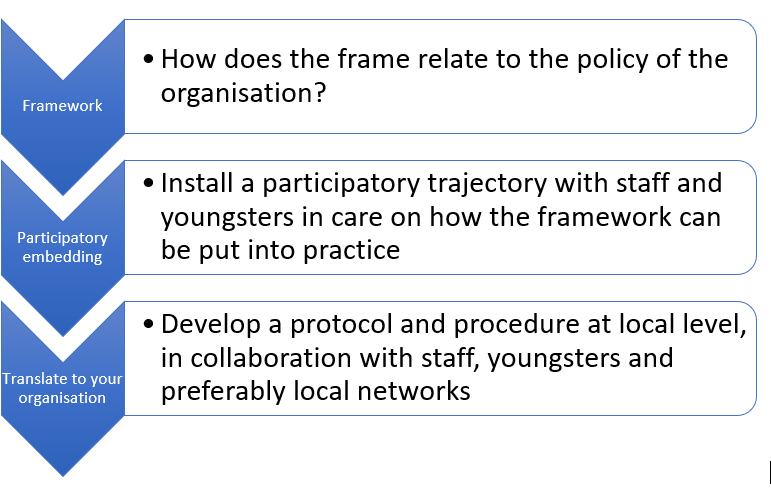Purpose
The policy framework wants to guide decisions and achieve better outcomes for after care in European youth care. It outlines aims and purposes for local youth care providers, which can be used as a statement of intent. The guide starts with a brief situational outline of the troublesome character of leaving out-of-home care. The first section highlights youngsters’ voices at the centre of the youth care process. By starting from their voices and insights from children’s right approaches, we emphasize a strength-based approach for after care in the second section. In the third section, six guidelines are presented for a strength-based after care policy.
“Youth in youth care above all askes acceptance as participating members of society. They invite society to give them real chances of improvement. Have faith in what we can achieve, is what they request.” (Van Audenhove, 2016)
While the guidelines of the framework are not binding, they can have an influence on after care practice on a local level. We advise local actors to clarify and concretise the policy framework into a protocol and procedure with roles, responsibilities and actions.
You can download the framework via this link.
How to use the framework
The framework outlines guidelines that can be used as a statement of intent for organisations. Youth care providers can endorse the guidelines as quality recommendations and have the freedom to develop a protocol and procedure for after care, based on the uniqueness of the local operation.
We recommend organisations to translate the principles to practice, by installing a participatory trajectory with staff and youngsters.

An example of a participatory method to discuss and implement the framework, is work in progress (coming soon).
We advise to:
- use the ‘Minimal standards for consulting with children’
- make use of non-verbal methods to discuss the framework (e.g. use pictures; let the youngsters make pictures, let them make a short film; make them draw their ideal pathway in life and then add what is needed to reach it/discuss what might not be easy to reach)
- create a safe participatory environment (e.g. youngsters should be allowed to stop when they want; provide protection against negative and stigmatizing feelings that might arise during the participation; have someone outside the care facility build confidence and guide the process with the youngsters; include youngsters that are already out of care)
